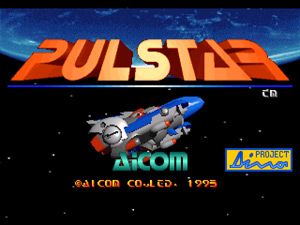Retro Replay Review
Gameplay
Pandemic 2 picks up where its predecessor left off, transforming the turn-based formula into a fast-paced, real-time strategy experience. Your overarching goal remains the same: evolve a deadly pathogen and watch it annihilate humanity. With a choice of three disease classes—Virus, Bacteria, and Parasite—each offering unique strengths and weaknesses, every playthrough feels distinctly different. The moment-to-moment tension of seeing infection rates spike on the world map keeps you invested from seed to extermination.
The game offers two modes to match different playstyles. In Relaxed mode, trait upgrades are limited and games conclude more quickly, providing a lighter, more accessible challenge. Realistic mode unlocks every available mutation and extends the timeline, demanding careful planning, resource allocation, and patience. Whether you’re a newcomer trying out a few fun combinations or a veteran plotting the perfect global pandemic, the modes neatly cater to varying levels of commitment and strategy.
Your currency in Pandemic 2 is the points you earn by infecting and killing hosts. Every outbreak, every death, and every border closure chips away at your global score, which in turn lets you purchase new traits—anything from enhanced transmission through airborne droplets to resistance against extreme climates. These upgrades feel meaningful, and unlocking a powerful trait can turn the tide of a game in dramatic fashion.
As you spread your disease, countries respond to contain the threat: sealing borders, investing in vaccine research, even declaring martial law. You can compromise seaports and airports, hitching rides on ships and planes to reach remote corners of the globe. Natural disasters like hurricanes, earthquakes, and droughts further spice up the challenge by both hampering and sometimes aiding your contagion. The interplay of human countermeasures and environmental events ensures no two attempts ever play out the same way.
Graphics
Graphically, Pandemic 2 takes a functional approach with a clean, minimalist interface. The world map is color-coded to show infection intensity at a glance, and icons for airports, seaports, and research labs are crisp and easy to interpret. There’s no attempt at flashy 3D visuals—instead, the design focuses on clarity, making strategy and decision-making the stars of the show.
Infection animations—small dots spreading across countries—are simple but effective visual cues. When a nation starts researching a cure, a progress bar appears alongside news-style alerts, heightening the sense of urgency. Catastrophe effects like storm clouds or tremor lines briefly flash across affected regions, reminding you that the environment can be both friend and foe.
Performance is rock solid, even on modest hardware. Because Pandemic 2 doesn’t tax your GPU with elaborate graphics, the game runs at a near-constant frame rate, and real-time updates are instantaneous. The interface responds quickly to clicks, and zooming in and out of the globe feels seamless. Background music and sound effects—sparse beeps, alerts, and ambient hums—complement the visuals without becoming intrusive.
Story
Pandemic 2 doesn’t deliver a scripted narrative with characters and cutscenes; instead, it weaves an emergent story driven entirely by your actions. You become the architect of disaster, and every decision—from where you begin your outbreak to which traits you prioritize—crafts a unique tale of viral conquest or failure.
Choosing a starting country adds inherent narrative flavor. Launching in a densely populated nation like China or the U.S. can lead to rapid global spread but also triggers faster research efforts. In contrast, igniting an outbreak in a smaller, isolated nation like Madagascar forces you to rely on stealthy, low-level transmissions until you’ve built enough momentum. Each scenario unfolds like a mini-story arc filled with suspense, setbacks, and breakthroughs.
The ongoing cat-and-mouse game between your evolving disease and humanity’s containment efforts builds dramatic tension. News-style messages about border closures, mass evacuations, and emergency measures add a layer of immersion. When a powerful hurricane unexpectedly accelerates infections or a vaccine lab suddenly nears completion, the emotional stakes shoot through the roof.
Even without named protagonists, Pandemic 2 delivers a compelling sense of progression—from patient zero to global extinction or a last-ditch cure. The narrative power arises organically from the tension of watching nations scramble to survive while your pathogen adapts and overcomes each new obstacle.
Overall Experience
Pandemic 2 offers one of the most addictive strategy loops available in a browser-based game. The combination of accessible mechanics, deep strategic possibilities, and an ever-changing global map means you’ll find yourself coming back for “just one more” attempt. Victory feels hard-earned, and each success unlocks new challenges to master.
The learning curve is gentle thanks to Relaxed mode and a clear tutorial, yet the game scales beautifully into a serious test of planning and foresight in Realistic mode. Balancing stealthy spread with aggressive lethality, managing point budgets for upgrades, and reacting to dynamic country responses ensure that every session is mentally stimulating.
Replay value is off the charts. With 21 distinct starting locations, three disease classes, two difficulty modes, and dozens of unlockable traits, the permutations are nearly limitless. Sharing strategies and comparing outcomes with friends only adds to the longevity, turning each game into a conversation starter about the “perfect plague.”
In sum, Pandemic 2 strikes an excellent balance between simplicity and depth. It’s visually clean, mechanically robust, and narratively engaging despite its abstract premise. Whether you’re a casual gamer looking for a quick, thrilling diversion or a hardcore strategist seeking your next conquest, Pandemic 2 delivers a compelling, high-replay experience at minimal cost.
 Retro Replay Retro Replay gaming reviews, news, emulation, geek stuff and more!
Retro Replay Retro Replay gaming reviews, news, emulation, geek stuff and more!









Reviews
There are no reviews yet.